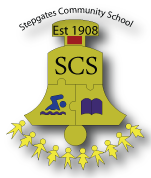Art
At Stepgates Community school we are striving to embed 'The Arts' as part of a creative curriculum. To do this successfully, we wish to provide pupils with rich and exciting experiences in music and art. These subjects, we hope, will shine through other subjects as well as the children learning the skills to have a foundation for art and music.
At Stepgates Community School, we value Art and Design as an important part of the children’s entitlement to a broad and balanced curriculum. Art and Design provides the children with the opportunities to develop and extend skills and an opportunity to express their individual interests, thought and ideas.
A high-quality art and design education should engage, inspire and challenge pupils, equipping them with the knowledge and skills to experiment, invent and create their own works of art, craft and design. As pupils progress, they should be able to think critically and develop a more rigorous understanding of art and design. They should also know how art and design both reflect and shape our history, and contribute to the culture, creativity and wealth of our nation.
Aims
The national curriculum for art and design aims to ensure that all pupils:
- Produce creative work, exploring their ideas and recording their experiences
- Become proficient in drawing, painting, sculpture and other art, craft and design techniques
- Evaluate and analyse creative works using the language of art, craft and design
- Know about great artists, craft makers and designers, and understand the historical and cultural development of their art forms.
The teaching and implementation of the Art and Design Curriculum at Stepgates Community School is based on the National Curriculum and is taught purely as a subject on its own as part of the school's carousel and is also linked to topics to ensure a well-structured approach to this creative subject. There is also an 'Artist of the month' where children create artwork in the style of twenty-two different artists over two years, to enrich their historical knowledge.
Ongoing monitoring takes place throughout the year. Teachers use this information to inform future lessons; ensuring children are supported and challenged appropriately. This information is analysed on a termly basis to inform and address any trends or gaps in attainment.
